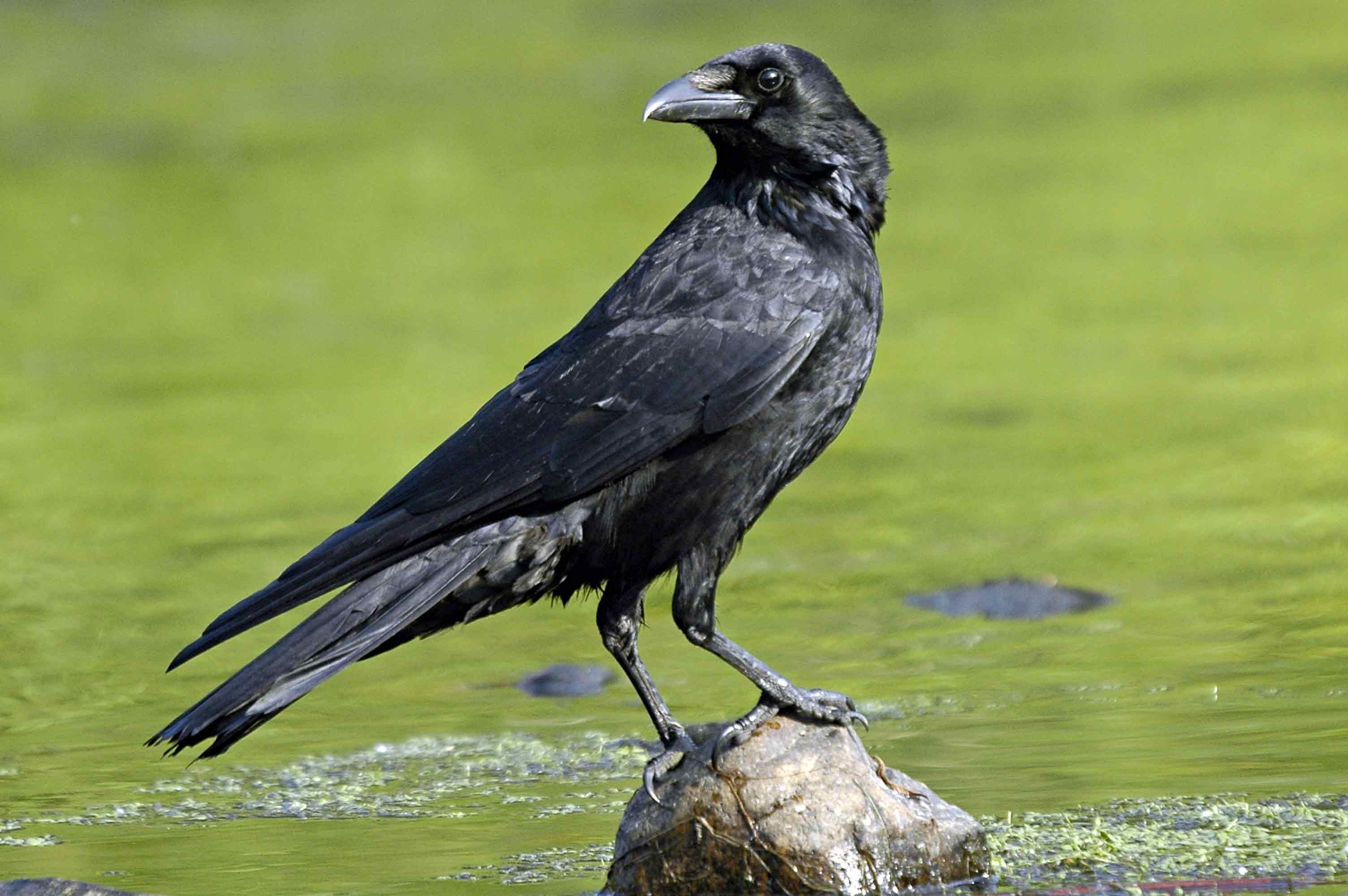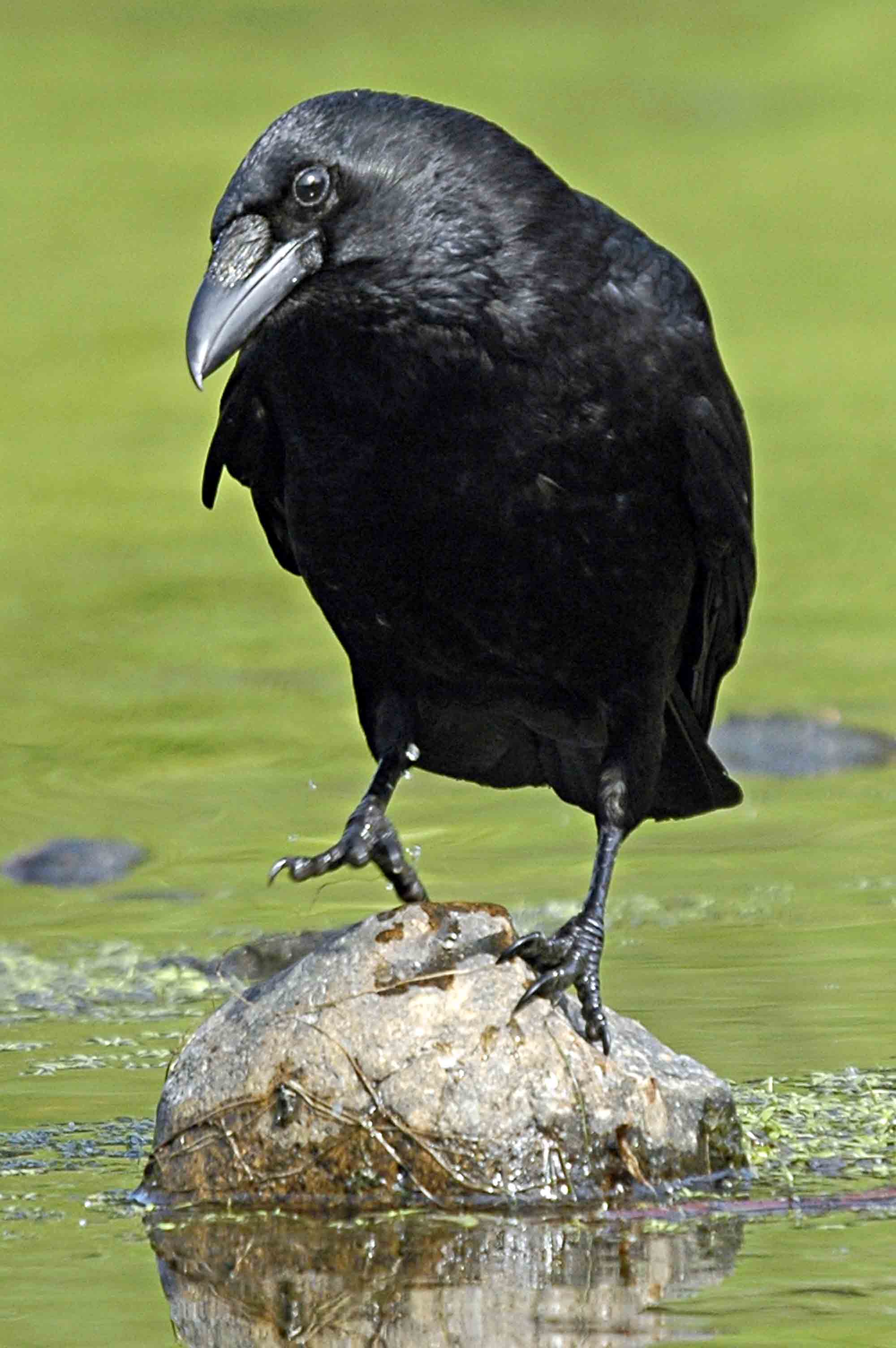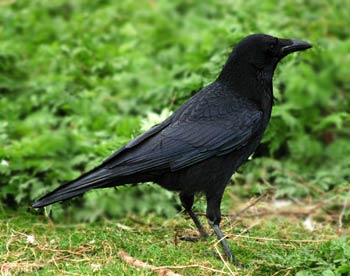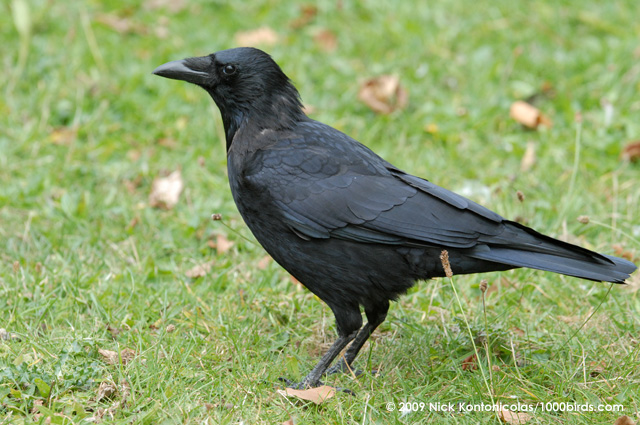
Corvus corone
SUBFAMILY
Corvinae
TAXONOMY
Corvus corone Linnaeus, 1758, England. Two subspecies.
OTHER COMMON NAMES
English: Eurasian crow; French: Corneille noire; German:
Aaskrдhe; Spanish: Corneja Cenicienta.
PHYSICAL CHARACTERISTICS
18.72–21.84 in (48–56 cm); male 1–1.4 lb (465–650 g), female
1–1.3 lb (450–600 g). Plumage is entirely black with a bluish
to purplish sheen. Conspicuous bristles cover base of culmen
and basal third of upper mandible. Bill, legs, and feet are
black.
DISTRIBUTION
Widely distributed throughout Europe and Asia. The black
nominate form is replaced in central Europe and western Asia
by the gray and black race known as the hooded crow.
HABITAT
Huge diversity of habitats, ranging from the centers of cities
to sea cliffs.
BEHAVIOR
Some territories held year-round. Most defended only during
breeding season, especially aggressively when nest-building.
Considerable territorial rivalry between corvids; crows and
black-billed magpies will destroy each other’s nests and predate
eggs and chicks.
FEEDING ECOLOGY AND DIET
Mainly carnivorous. Diet includes invertebrates, mollusks,
amphibians, fish, birds, and mammals. Also carrion and human
garbage.
REPRODUCTIVE BIOLOGY
Solitary nester. Stick nest in tree or bush, cliff ledges, or buildings.
Generally lays four to five eggs April through May in cup
made of moss, wool, animal hair, and roots. Incubation 17–19
days; fledging 32–36 days.
CONSERVATION STATUS
Not threatened. Common throughout its range.
SIGNIFICANCE TO HUMANS
Perceived as a threat to livestock and game birds throughout
its range and heavily persecuted.
Other popular Animals
Photo Gallery of - Carrion crow




 Animalia Life
Animalia Life